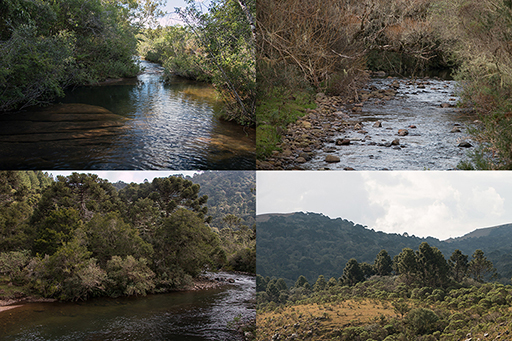

té Until the middle of the 18th century, a vast region south of the Paranapanema River, including all of the Second and Third Paranaense Plateaus, was called “sertões do Tibagi”. The term “sertão”used to designated an unknown area still unexplored (more recently, sertão means backlands, hinterlands, etc). In those times, the word “Tibagi”always evoked gold and diamond mines, which made it easy to recruit people for exploratory expeditions. The principle of uti possidetis was in full vigor: possession of territory came to those who populated it.
Aiming to establish communications between the Sacramento and Iguatemi colonies in Mato Grosso in order to guarantee Portuguese dominion over the territory, the governer of the São Paulo Captaincy, D. Luís Antonio de Souza Botelho Mourão, known as Morgado de Mateus, promoted a series of expeditions into the Tibagi sertões between 1768 and 1773. Commanded by Afonso Botelho de Sampaio e Souza, with men recruited in the region’s small towns and fazendas, these explorations were very well planned. Along the way, whenever they stopped they had to clear the land, and in the open fields they found, they had to set grass fires to show that they had passed by, and to prepare the terrain for future settlement.
In the most noteworthy places, they had to leave marks (“Viva El-Rei de Portugal”) scratched on boulders or carved into big trees, and map the places on their charts, so that the places could be found later on. The main fazendas became suppliers of transport animals and foodstuffs necessary for the maintaining of the groups. A permanent guard was installed at São Bento Port on the Tibagi River. The guard guaranteed the security and provisioning of the bands which left daily in the directions of the Ivaí and Paraná Rivers, and to Mato Grosso. On the Iguaçu River, other places supported the expeditions, like the Nossa Senhora da Conceição de Caiacanga Port. The expeditions resulted in maps, among them, “Planta do Sertão de Tibagi Que Se Acha Descoberto” (1769) and “Carta Corografica dos dous Certoens de Tibagi e Ivay novamente descobertos pelas ordens e instruções de D. Luiz Antonio de Souza governador e capitão general de São Paulo anno 1770”.
click on picture
to enlarge